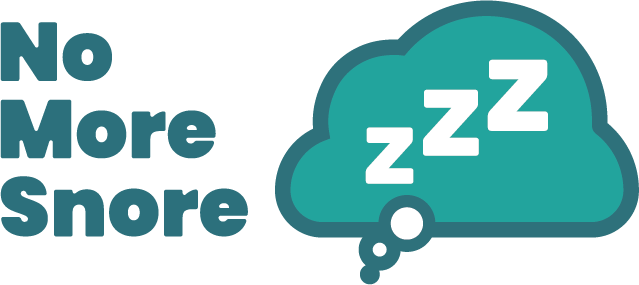Sleep apnea is a common sleep disorder that affects people of all ages, including children. It is characterized by pauses in breathing during sleep, leading to disrupted sleep patterns and a range of health issues. In this blog, we will explore the causes, symptoms, and treatment approaches for sleep apnea in children, helping parents and caregivers better understand this condition and seek appropriate care for their little ones.
Understanding Sleep Apnea in Children
Sleep apnea in children occurs when their breathing is partially or completely obstructed during sleep, resulting in pauses in breathing and decreased oxygen levels. There are two primary types of sleep apnea in children:
Obstructive Sleep Apnea (OSA): This is the most common form of sleep apnea in children. It occurs when the muscles in the back of the throat relax, causing the airway to become blocked or narrowed.
Central Sleep Apnea (CSA): Central sleep apnea is less common in children. It occurs when the brain fails to send proper signals to the muscles responsible for breathing, leading to pauses in breathing during sleep.
Causes of Sleep Apnea in Children
Several factors contribute to the development of sleep apnea in children. These include:
Enlarged Tonsils and Adenoids: The most frequent cause of obstructive sleep apnea in children is enlarged tonsils and adenoids. When these structures in the throat become inflamed or enlarged, they can obstruct the airway and disrupt breathing during sleep.
Obesity: Excess weight can contribute to the development or exacerbation of sleep apnea in children. The accumulation of fat in the upper airway can lead to narrowing and obstruction of the airway during sleep.
Craniofacial Abnormalities: Certain facial and skull abnormalities, such as a small jaw, a large tongue, or a narrow nasal passage, can contribute to airway narrowing and increase the risk of sleep apnea in children.
Family History: Children with a family history of sleep apnea are more likely to develop the condition themselves. Genetic factors may play a role in the anatomical characteristics of the airway or the control of breathing during sleep.
Symptoms of Sleep Apnea in Children:
Recognizing the symptoms of sleep apnea in children is crucial for early intervention.
Common symptoms include:
Loud, Persistent Snoring: Regular and loud snoring is a primary symptom of sleep apnea in children. It is often more noticeable when the child sleeps on their back and may be interrupted by pauses in breathing or choking sounds.
Pauses in Breathing: Parents may observe pauses in their child’s breathing during sleep, followed by gasping or choking sounds as breathing resumes.
Restless Sleep: Children with sleep apnea often experience restless sleep, characterized by frequent tossing and turning or changes in sleep position.
Excessive Daytime Sleepiness: Sleep-disordered breathing can result in daytime sleepiness, making it difficult for children to stay awake and concentrate during the day. They may appear excessively tired or drowsy.
Behavioral Issues: Sleep apnea can contribute to behavioral problems in children. They may exhibit irritability, mood swings, hyperactivity, poor attention span, and difficulties with learning and school performance.
Morning Headaches: Children with sleep apnea may frequently wake up with headaches, which can be a result of disrupted sleep and inadequate oxygen intake.
Bedwetting: Sleep apnea can be associated with bedwetting (enuresis) in some children.
Treatment Approaches for Sleep Apnea in Children:
The treatment of sleep apnea in children aims to alleviate symptoms, improve sleep quality, and promote overall health.
Treatment options may include:
Adenotonsillectomy: Surgical removal of enlarged tonsils and adenoids is often recommended for children with obstructive sleep apnea. This procedure can significantly improve breathing and resolve symptoms in many cases.
Continuous Positive Airway Pressure (CPAP) Therapy: CPAP therapy involves wearing a mask over the nose and/or mouth during sleep. A machine delivers a continuous stream of air, keeping the airway open and preventing apnea episodes. CPAP therapy is commonly used for moderate to severe cases of sleep apnea in children.
Weight Management: For children with obesity-related sleep apnea, weight management through a balanced diet and regular physical activity is crucial. Achieving and maintaining a healthy weight can reduce the severity of sleep apnea symptoms.
Orthodontic Interventions: Orthodontic devices, such as braces or oral appliances, may be recommended for children with craniofacial abnormalities. These interventions can help widen the airway and improve breathing during sleep.
Positional Therapy: Encouraging children to sleep on their side instead of their back can help reduce airway obstructions and improve breathing. This can be achieved by using special pillows or devices that promote side sleeping.
Sleep Hygiene and Routine: Establishing a consistent sleep routine and creating a sleep-friendly environment can improve sleep quality for children with sleep apnea. This includes ensuring a comfortable and quiet sleep environment, maintaining regular bedtimes, and implementing relaxing pre-sleep routines.
Sleep apnea in children is a significant health concern that can impact their overall well-being. By understanding the causes, recognizing the symptoms, and exploring appropriate treatment approaches, parents and caregivers can help their children manage sleep apnea effectively. If you suspect your child may have sleep apnea, consult with a pediatrician or a sleep specialist for an accurate diagnosis and personalized treatment plan. With early intervention and proper care, children with sleep apnea can experience improved sleep quality and better overall health.

